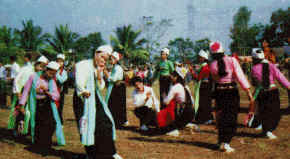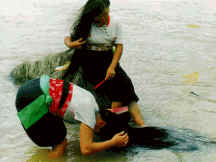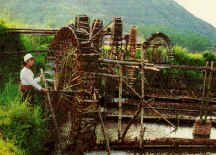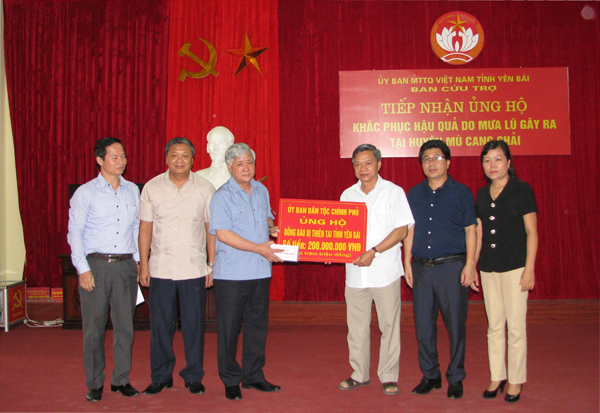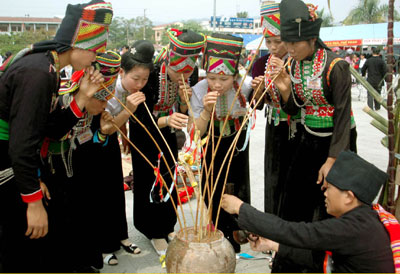The Mường
11:20 AM 22/01/2016 Views: 7108 PrintThe Muong have a population of more than 914,600 inhabitants living in the northern provinces, The largest part is concentrating in Hoa Binh province and the mountain districts of Thanh Hoa province, The Muong are also called Mol, Mual, Moi, Moi Bi, Au ta and Ao ta. Muong language belongs to the Viet-Muong Group, The Muong practice polytheism and ancestor-worship.
The Muong lead a sedentary life in mountain areas where arable land is available, near the roads and very convenient for production. The Muong practice farming occupation for a time immemorial. Wet rice is their main staple food. In the past, they preferred sticky rice to ordinary rice. Family extra-occupation is to exploit forest products including mushroom, jew's ears, amomum, sticklac, cinnamon, honey, timber, bamboo and rattan. Handicrafts are popular such as weaving, basketry and silk spinning. Muong women are very skillful in loom weaving.
Muong men dress indigo pyjamas. Women wear white rectangular scarf, bra, short vest open at the front (or at the shoulders) with no buttons, and long skirt. The skirt is enhanced by a very large silk belt embroidered with various motifs such as flowers, figures, dragons, phoenixes, deer and birds.
In the former days, the lang dao system characterized Muong social form. The lang dao families including the Dinh, the Quach, the Bach and the Ha continuously ruled the Muong regions. Several villages form a muong. A head of a muong was a Iang cun, under lang cun were lang xom or dao xom who ruled a hamlet (xom).
The Muong custom of marriages is manifested in the same way of the Kinh (including plighting ceremony, betrothal ceremony, wedding approval and fetching the bride from her parents). When a woman is giving birth to the child, her family surrounds the main ladder by a bamboo fence. The child will be given true name when it is one year-old. The Muong hold funerals with strict rituals.
The Muong hold many ceremonies all the year round such as: Going to the fields (khuong mua), Praying for rain (in the fourth lunar month). Washing rice leaves (in the seventh and eighth lunar months), and new rice ritual.
Muong popular literature and arts are rich including long poems, mo (ceremonial songs), folksongs, dialogue duet, proverbs, lullabies and children's songs. Gong is a peculiar musical instrument of the Muong, apart from this, there are two-stringed violin, flutes, drums and pan-pipes. The Muong who are living in Vinh Phu province use bamboo pipe to tap at the wooden floor to make lyrical sounds. This is called dam duong.

